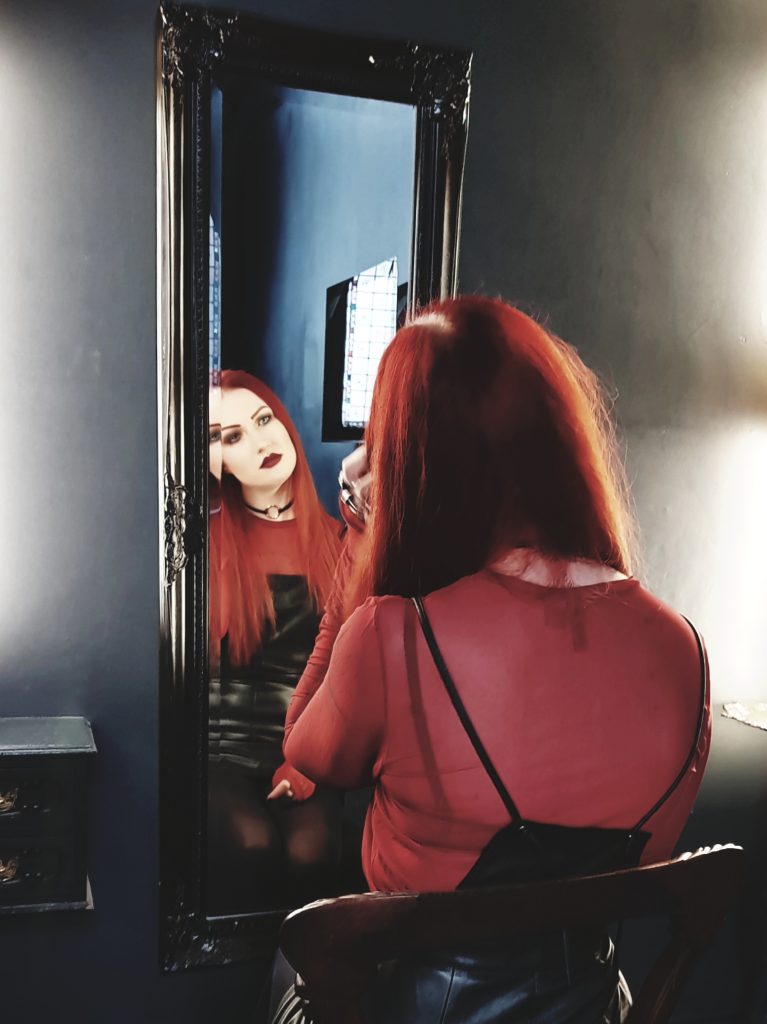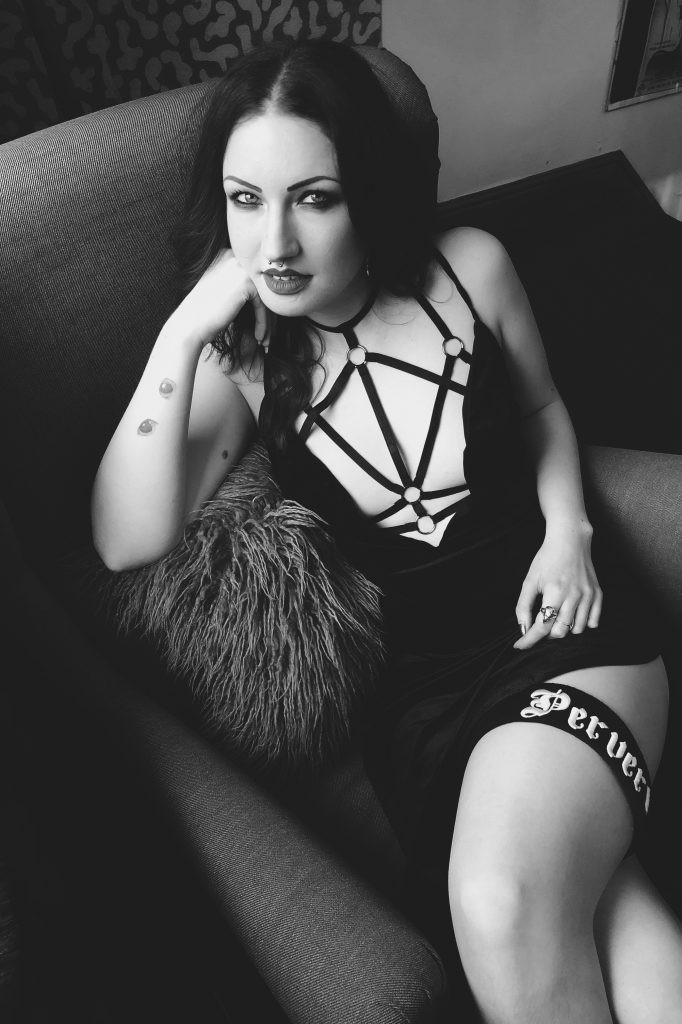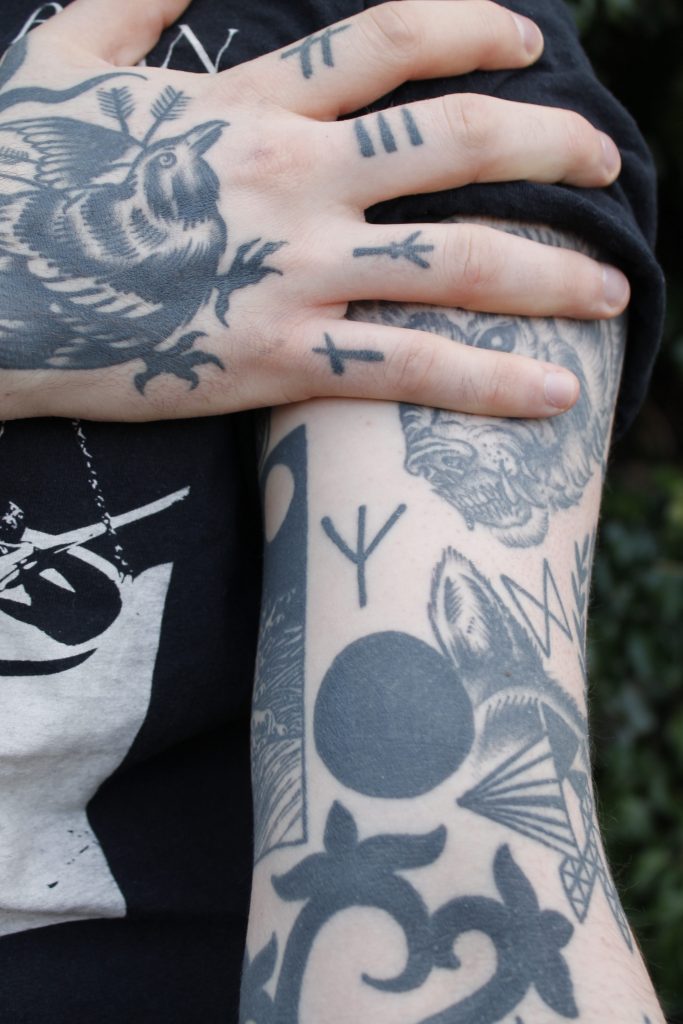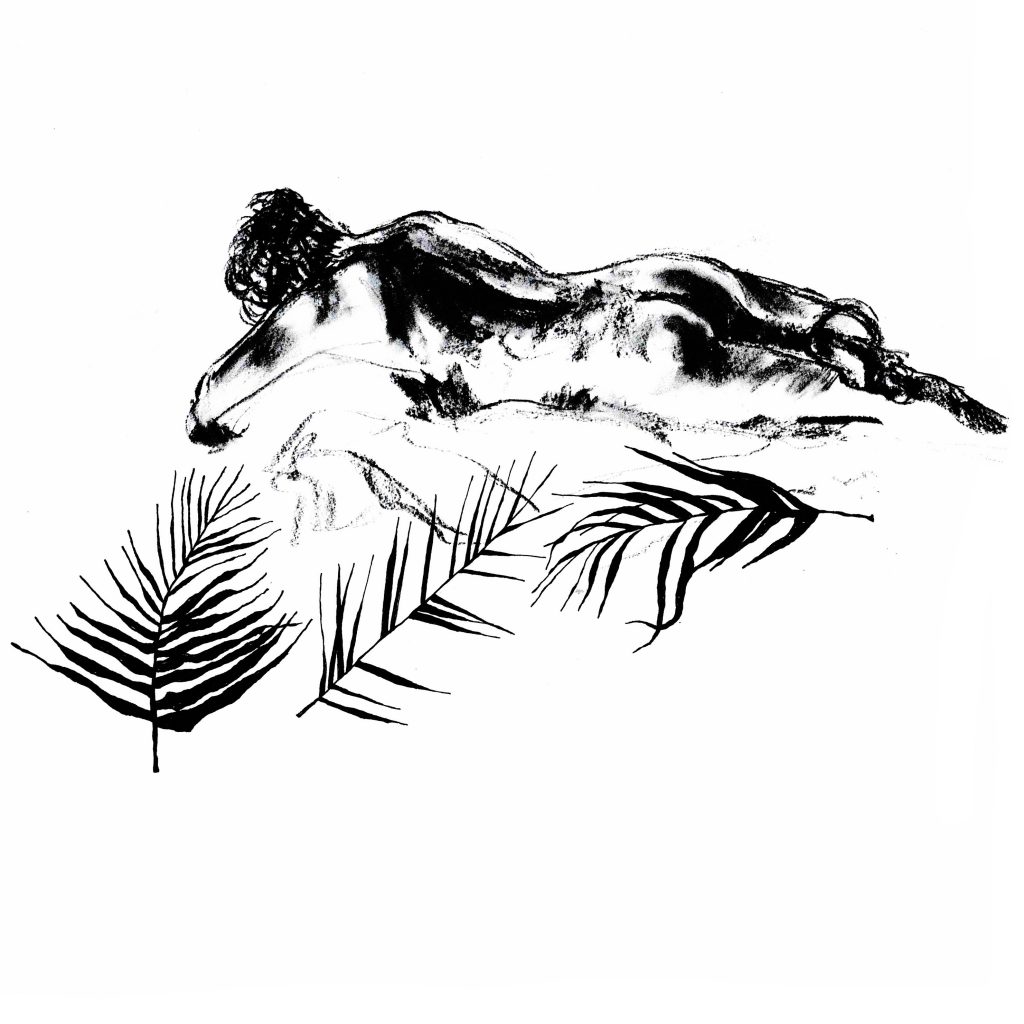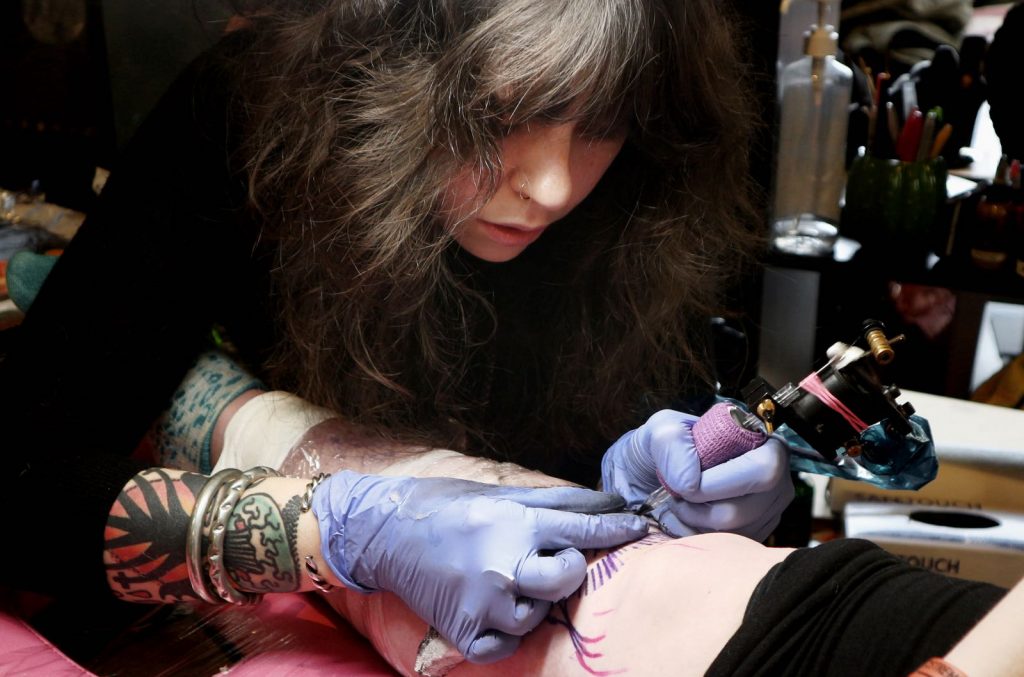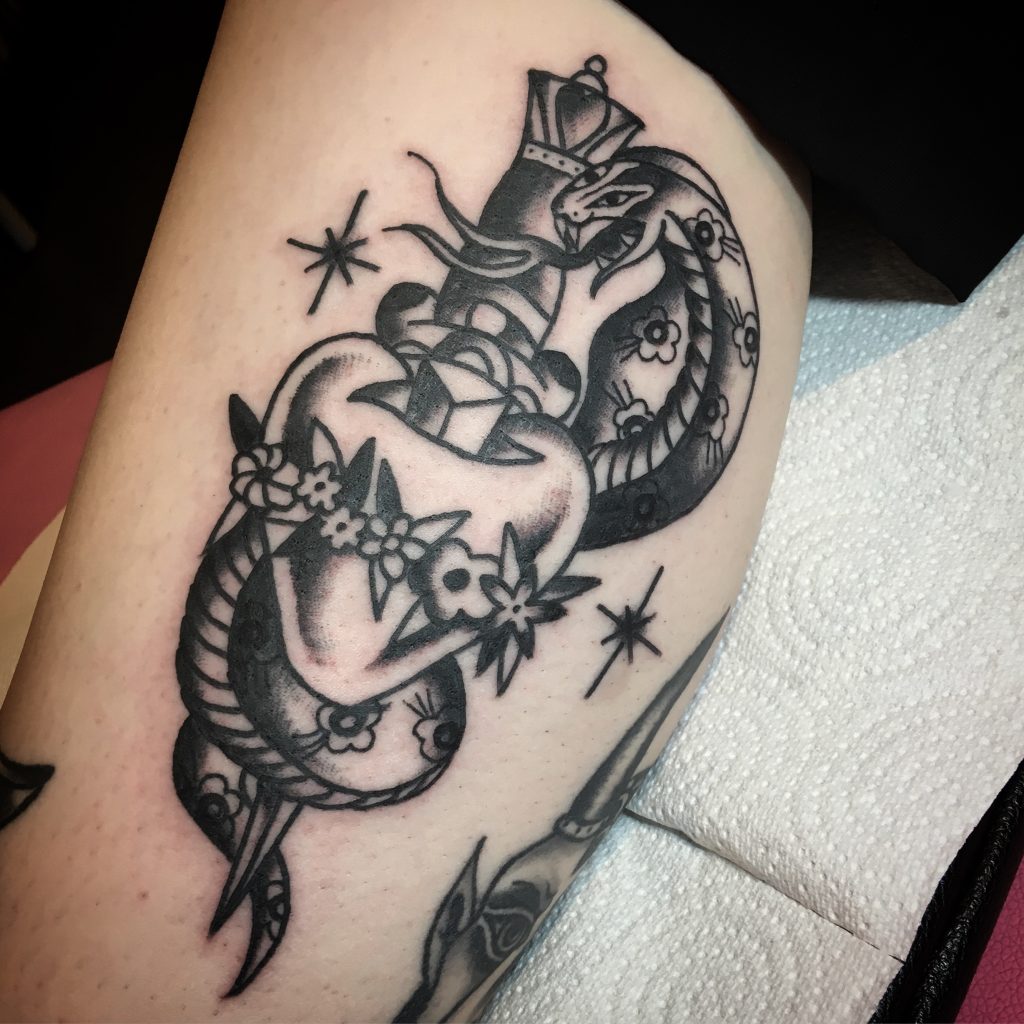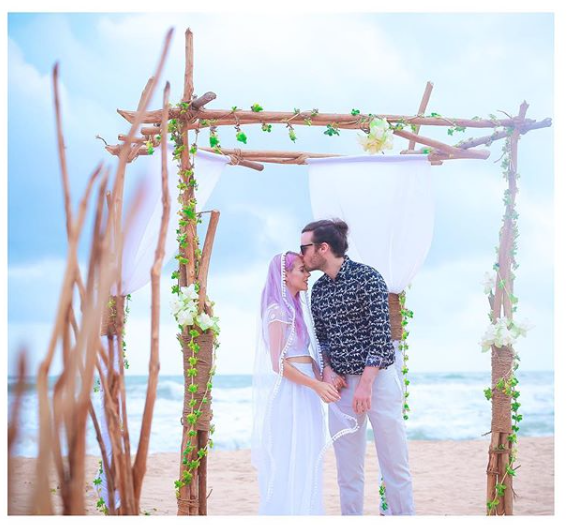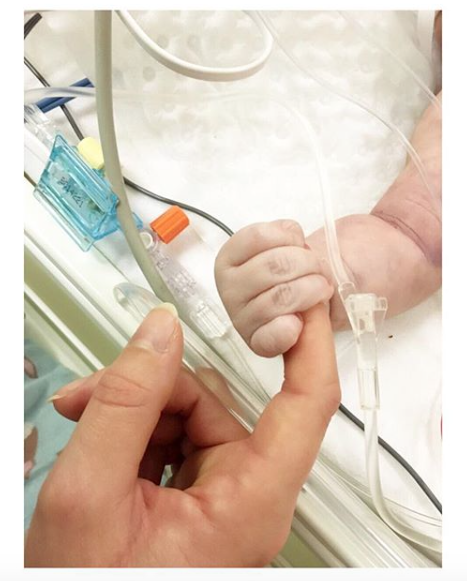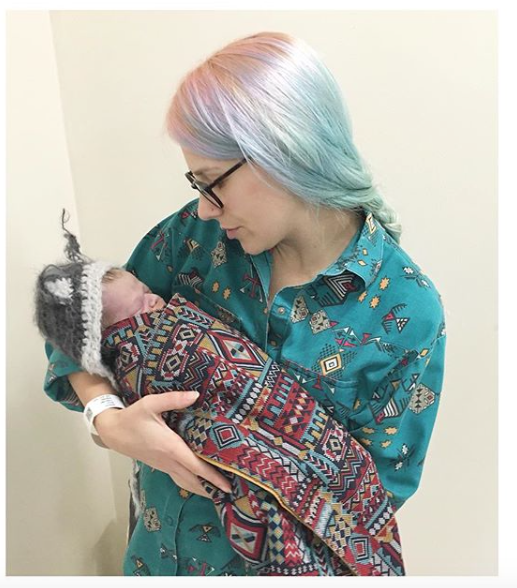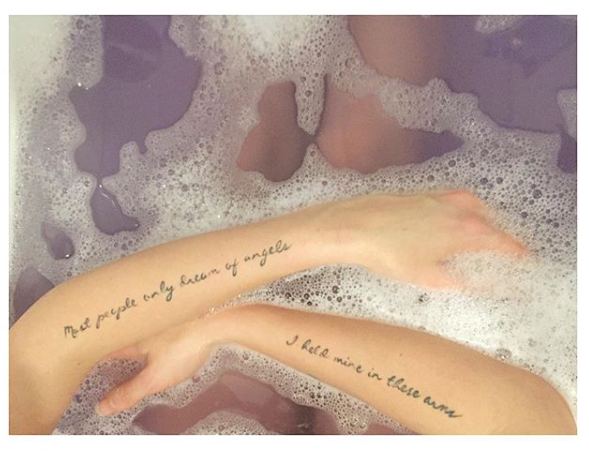Managing editor Keely Reichardt approached tattoo artist, Fidjit over Instagram in July 2015 after spotting an ambiguous statement posted late at night. Fidjit chose to remove the post not long after it had gone live, but Keely decided to reach out to her, to find out about the life-changing event she had hinted at…
The deleted post described the language used against her in a recent court case… Fidjit is a rape survivor and endured a horrific court ordeal where the defendant was found not guilty. With only 5.7% of rape cases ending in a conviction for the perpetrator, Fidjit wanted us to share her story to make people aware of court proceedings and your rights as a victim.

“I started going out with my ex boyfriend when I was fifteen years old. We briefly broke up when I was twenty but then we got back together. Just before I turned twenty-one, he raped me.
“He had never been violent in any way before, he showed no warning signs. It happened in April 2011. I would like to keep the intimate details of what happened to myself, it’s too personal to share with everyone. There was an argument which resulted in him raping me. Immediately after it happened he broke down, burst into tears and repeatedly apologised, it seemed like he went into some sort of shock – as I did too. I didn’t cry or move or speak, I remember feeling very numb, I couldn’t process what had just happened, I just sat and listened to him crying.
“For a long time afterwards I was definitely in denial. We spoke together about what had happened, he never denied what he had done and always took full responsibility. I was in denial and so confused about what had happened that I phoned the Samaritans a few days after. I explained what had happened and they told me I had been raped and that I should contact my local Rape Crisis centre. My ex boyfriend drove me there himself and he threw up in the car park; the fact that he had taken me there got brought up in court later, but was completely ignored as he said he was just trying to be a good boyfriend. I also saw a nurse. My ex spoke to a couple of his friends about what had happened. One of his friends told him what he had done was wrong and he stopped speaking to him. The other friend told him I was his girlfriend and that it doesn’t count if you’re in a relationship?! These two friends ended up as witnesses in court. I had also spoken to one friend over the phone, he knew something was wrong and ended up guessing what had happened, I told the police about him being the first person that I had told. They said he would be my witness. They never even contacted him and he was not involved in the trial.
“Months passed and I still hadn’t told anyone else, and I continued to tell myself that it hadn’t happened but my behaviour began to change. I became incredibly withdrawn and I stopped going to my flat (which I shared with my ex) and would go to my parents every night and stay there for as long as I could until I had to go back to my flat to sleep. My parents and I are extremely close and we tell each other everything. They could see that something was bothering me. Sometimes I’d phone them with the intention of telling them what had happened but I would hang up. I knew that the second I told them everything would change forever. My best friend would be my best friend no longer, he would be my rapist. And I knew that I would have to let his mother know what her son had done, and that’s something I could never think about doing. I knew it would change her life as well as mine and his forever. I feel like because of our history I was protecting him far too much at this point.
“I carried on living at the flat until September 2011, five months after what had happened. My ex was still living there too, we weren’t together but we were just kind of going through the motions. We were still sleeping in the same bed and he was still apologising every day. The friend I had told on the phone finally convinced me to tell my parents. I was spending the night at my parents’ house and something came on the TV that just made me blow up. I became incredibly upset and was screaming about it. My dad said that this behaviour was not normal and I needed to tell them right now what was going on. I remember saying I didn’t want to and he guessed right away what had happened. It is the worst thing I’ve ever had to tell them. This is probably one of the hardest things I had to deal with after my rape; I’m the one who has to tell everyone, including my family, about this horrible thing that had happened.
“I told my parents I didn’t want to go to the police, I refused to, and I didn’t want his mother to know. I decided to move to London as I was living in Scotland at the time. I quit my apprenticeship and sold all of my furniture and I took an overnight bus down. My ex and I still kept in touch and still spoke about what had happened all the time. It was horrible, it was like torture, it just never goes away. It still doesn’t go away.
“About a year later I moved back up to Scotland and this is when I read something that really woke me up. I read an article about rape victims, written by rape victims. It was basically about the importance of reporting these things to the police as without more people coming forward it’s hard to change things –and things definitely need to change. The main thing that made me want to report it at the time was reading about the possibility of him doing this to somebody else. I had not thought about that possibility before. I went to the police station at 11pm and I knew I had to do it immediately or I would change my mind. As bizarre as it sounds, I spoke to my ex before I went to the police to tell him that I had to do something about it and I told him about the detrimental effect it was still having on my mental health. He told me he needed to, “man up” and take responsibility, and that if I needed to go to the police then that’s fine. It was a very different story when I actually went to the police and did report it.
“I had my statement taken at the police station. They take a statement from you multiple times and you have to go back many times to confirm/review your statement. Mine was not recorded, it was written down by someone and every time I reviewed it there were mistakes in it which I had to correct. They were also very specific about what I was allowed to include in my statement and what I wasn’t allowed to include. For example, he had told me why he had done it, he had told me he didn’t feel like I was “his” anymore. I was told it was irrelevant. It was many weeks after I had given my statement that I finally received a call telling me that he had been arrested and let out on bail. He refused to give a statement and just repeated “no comment” to any questions he was asked. I feel it’s important to add here that he is a middle class, wealthy, white man with his own expensive lawyer; he is basically untouchable.
“The witnesses were then both questioned . They both gave statements and both of their statements said that he (my ex) had gone to them and told them he had “gone too far”. Both of their stories matched each other’s and more importantly both of their stories matched mine. I think this is a big factor in why this made it to court. It is incredibly difficult for something to go to court because if they think that there is not enough evidence they will not take it any further. This does not mean by any means that anyone is innocent, it just means that they don’t have enough evidence for a conviction. They never made any attempt to contact my witness.
“I finally received a call saying that they had enough evidence and it was going to be taken to High Court. There were several months of waiting and he (my ex) had one hearing in which he plead not guilty. I feel I was really naive at this time and I genuinely thought that he was going to take responsibility for what he had done like he said he would.
“We got a court date for June 2014. In the time I was waiting I had to review my statement a number of times again with the Procurator Fiscal. I also had a meeting with someone to ask how I would like to appear in court. There are options that can be given to the witness; you can sit behind a curtain to give evidence, you can do it via video link, or you can be in the stand as normal but you can have a support person sitting with you while you are there. I went for the third option as I really wanted to face him. I thought that if he saw me speaking he wouldn’t be able to lie. I also had a meeting leading up to this time about the kind of things they were going to try and use against me in court. I was told that they were going to try and say that what had happened was part of some weird sexual game.
“The court date finally came. I was petrified of taking the stand. When you arrive in court as a witness they take you to a small private family room. You and whoever has come with you sit in there until you are called. In this instance the court was closed while I gave my evidence and then open for the rest of the trial, so my parents weren’t allowed to enter while I did my part. I know that this seems silly now but no one had told me that my ex would be in the room as I gave my evidence; the way they had described a closed court to me would be that it would just be me, the jury, the judge, procurator fiscal and his lawyer in the room. I wasn’t even aware that he (my ex) was in the room until I was asked to point him out. It threw me off and made me panic. The entire experience of being in the stand is hideous. I told the court what had happened and then I was questioned by the defence lawyer. I was shouted at and called a liar and a silly little girl. He said that I should have forced him off of me, and that if this had really happened I would have ran to the police station immediately. He smirked at me every time I spoke and he called me manipulative. When he asked why I hadn’t fought him off I replied, “I was terrified”. He laughed at me and said, “terrified of your own boyfriend?” I stood there crying whilst trying to defend myself but each time I tried to answer back the Judge would tell me to stop talking.
“The case ran for three days in total. The first day was my evidence and one of his witnesses. The witness on day one said that my ex had told him that he had gone too far and that yes, rape is what they were talking about. The witness solidified my story and both of our stories matched. So far it was looking quite promising that we would get a good result.
“Day two the second witness spoke. In his original statement to the police he had the same story as me and the first witness, however when he was on the stand he said that he had been forced to give that statement and that he takes it all back. He said that the Government were trying to use my ex as an example and then he started crying and saying he wanted to go home to his mum! I thought that this was great because surely he wouldn’t be taken seriously. After that, the police officer who took his statement took the stand to confirm that yes, those were the witness’s own words, he was not forced to say anything, and that he came of his own free will. Again I thought that this was a good thing because surely the Jury in a court would listen to the police officer who took the statement over the witness who was clearly lying. I was wrong.

“On the third day my ex took the stand. This is where I feel things are more disappointing than I can possibly put into words, and I know that this is an incredibly common thing that happens in rape cases. My ex was asked, “how are you today? Tell me about your family. You went to a good school didn’t you? You are working hard towards getting a degree aren’t you?” He was told that he was a good member of society, a gentleman, and even told that he was dressed very well for the trial. I was looked down upon when I gave my job title, I wasn’t asked what school I went to, I wasn’t asked about my family and I wasn’t told that I was a good member of society. Nothing derogatory was even said to him when the procurator fiscal was questioning him. When he took the stand he smiled politely, didn’t get upset, spoke of me as if I was someone to pity, kept referring to me as his “girlfriend” and then going, “oops, sorry I mean ex girlfriend.” He had been incredibly well prepped by his defence lawyer. His attitude and ability to lie in such a cold way upset me more than anything.
“Once everyone has taken the stand the procurator fiscal and defence lawyer both make speeches to the Jury to try and help them make a decision. The Judge also gives a speech to the Jury. I feel like it’s important to mention that the Judge for my case was an older man. From the minute I entered the court I felt unfairly looked upon by him. In his speech to the Jury he said that me and my ex were in a, “dedicated and loving relationship that had lasted for years, so could this really be true?” He also said that the Jury were not allowed to take into account the second witnesses statement as he is saying he did not say those things, so it has to be written off completely. The Jury were told that there were two people in the room when this incident happened. If they cannot be 100% sure that this happened then they can not find the defendant guilty.
The Jury’s verdict was not guilty.
“The second that this verdict is found I was completely on my own as far as professional support goes. I had a support person who sat with me throughout the whole procedure and she literally vanished as soon as the verdict was given. I didn’t see her again.You are left to just go home and get on with things.
“If I was to try and give any advice to rape victims, I would say to please try and take care of yourself as soon as you can. Open up to people closest to you, this can be hard but it’s harder to stay quiet. Rape is something that stays with you for the rest of your life but it certainly doesn’t have to define you. Unfortunately you can fall into patterns of self harm; I got involved with a hideous person after this who was heavily abusive. I didn’t realise that this was a form of self harm because I was so miserable about what had happened. It is never your fault and it doesn’t make you “damaged goods”. There is still so much stigma around coming out as a victim of rape but I don’t understand why. You haven’t done anything wrong and it should be no reflection on you or your character. The more people speak out then hopefully the more changes can be made in the way rape cases are dealt with by the criminal justice system.”
For anyone who has experienced sexual violence, Rape Crisis is an organisation with centres in Scotland, England and Wales. They offer support and information about where your nearest centre may be if you need urgent care: rapecrisis.org.uk/centres.php You can also call the national helpline number: 0808 802 9999 / Scotland: www.rapecrisisscotland.org.uk and a Scottish helpline: 08088 01 03 02
The Women & Girls Network are an organisation based in London who offer counselling services, advocacy support and telephone counselling. All information can be found on their website: www.wgn.org.uk and they also have a phone number which deals with practical support: 0808 801 0660. If you are in need of emotional support and an anonymous space to talk call: 0808 801 0770.

